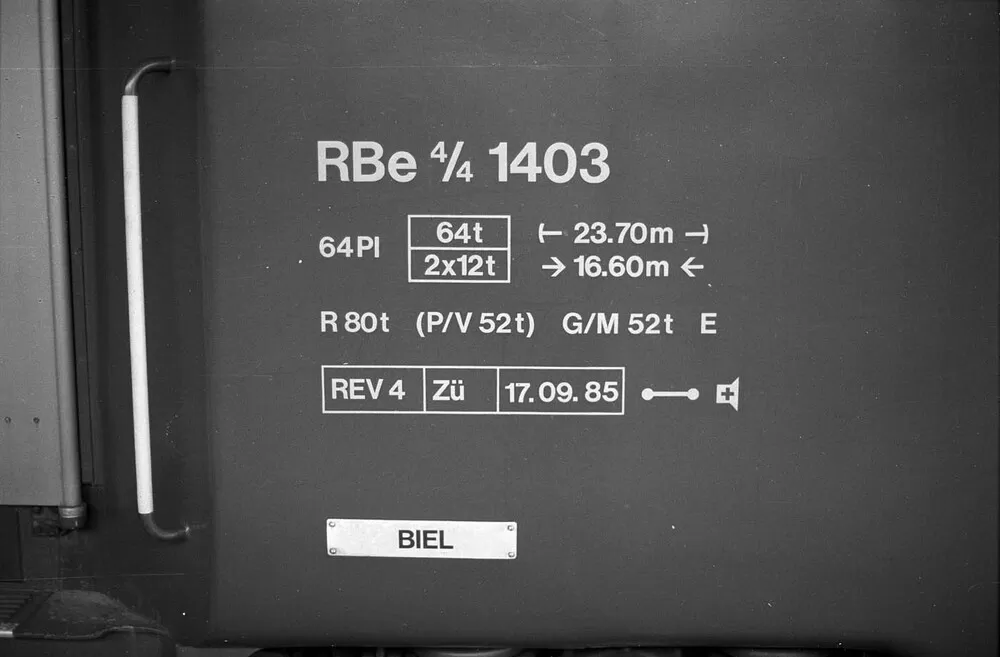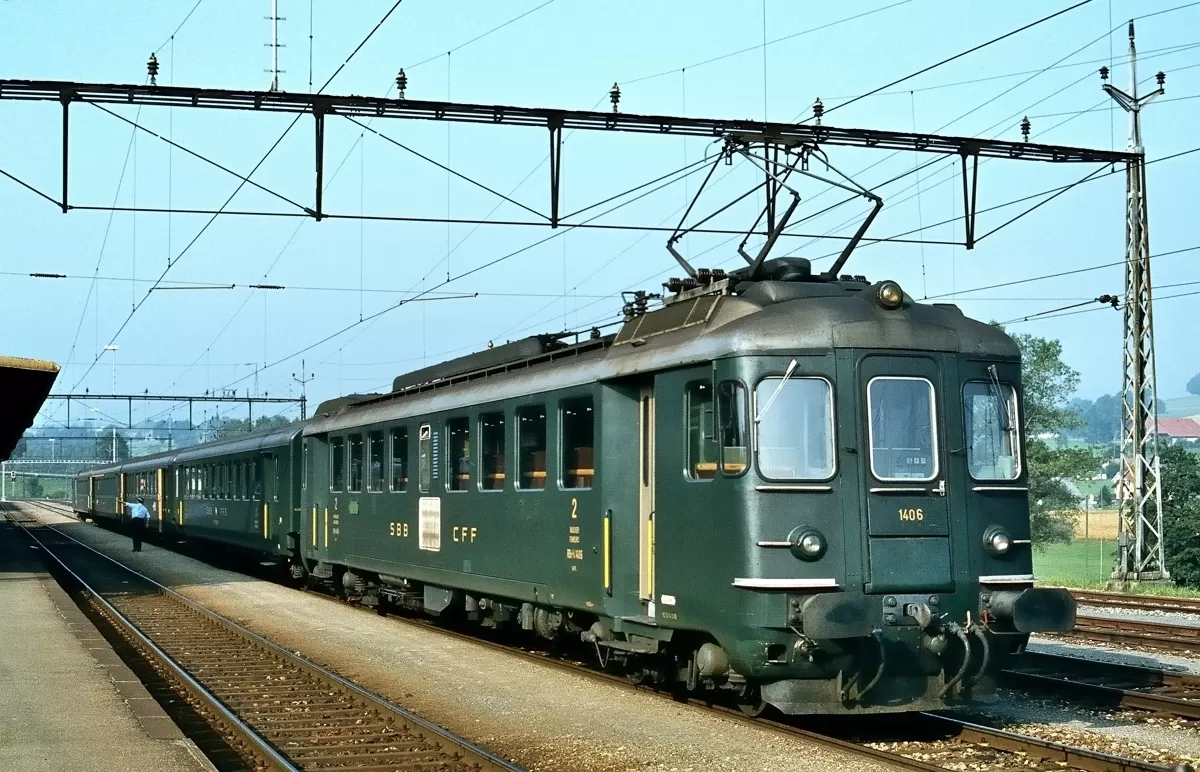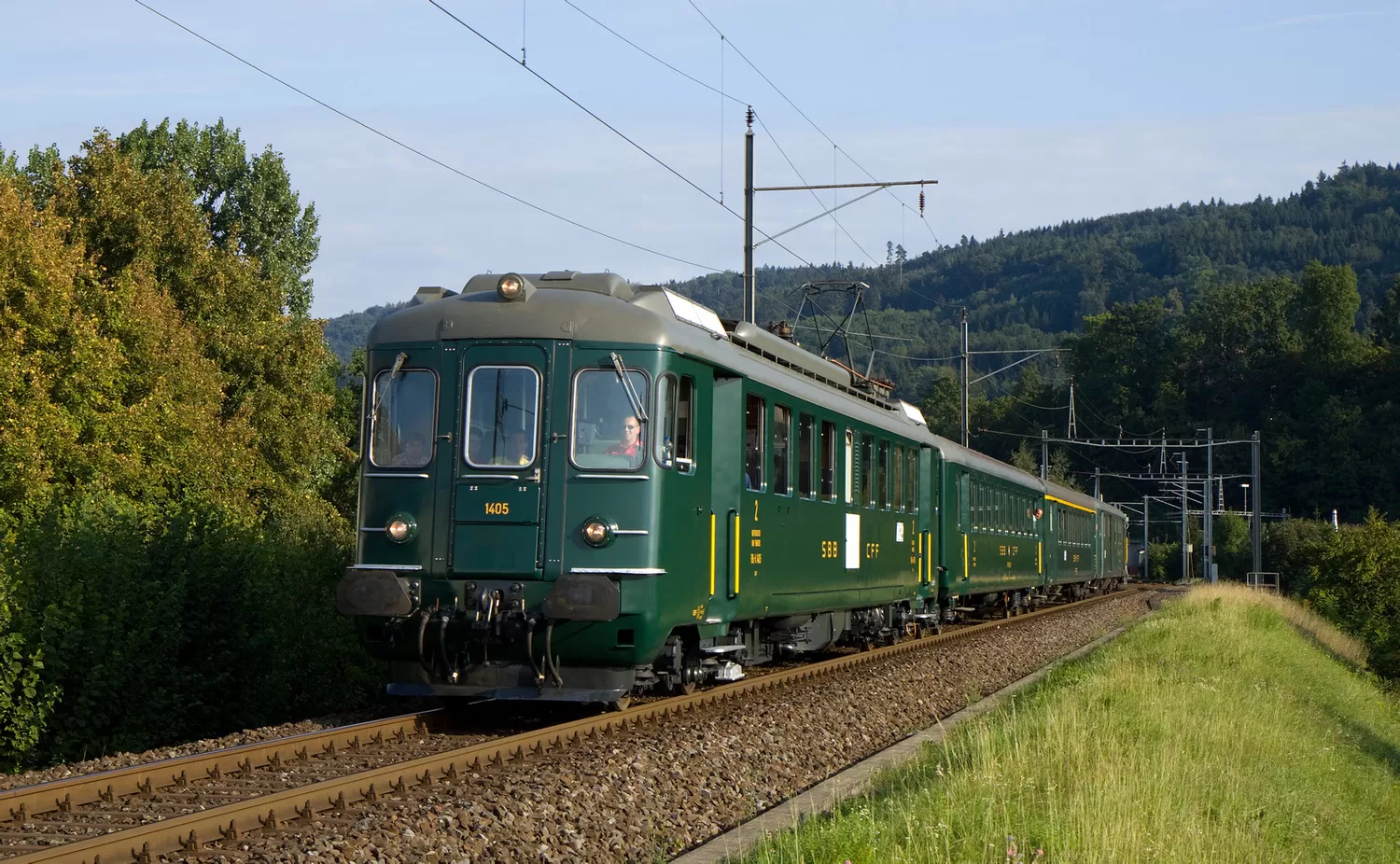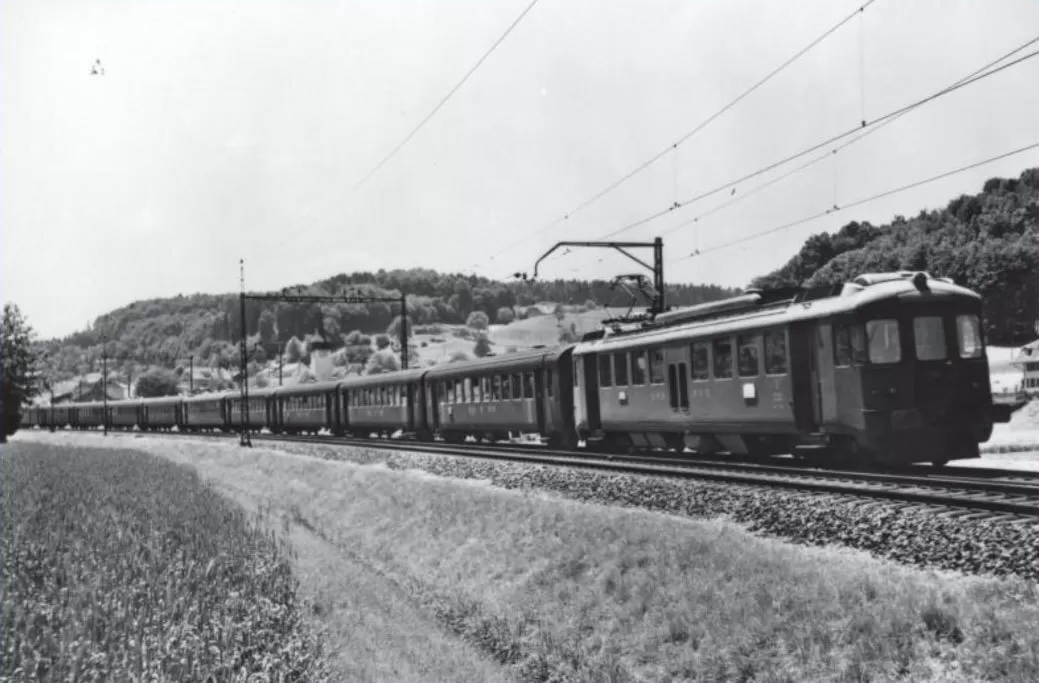
Source: bahnbilder-von-max.ch

Source: R. Werder - polier.ch

Source: bahnalltag.de

Source: Maarten van der Velden

Source: dsf-koblenz.ch

Source: C. Hertogs

Source: David Gubler
In 1964, Switzerland planned a national exhibition (Expo '64) in
Lausanne. This raised a unique challenge for the Swiss Federal
Railways (the SBB) that had to secure the transport of visitors
from all over Switzerland to Lausanne (at the time not so many
people owned a car and other modes of transport such as buses were
not yet available to such an extent as it is the case today). But
all modern locomotives were used in regular service and only old
locomotives were available for the necessary extra trains needed to
get people to and from the exhibition.
This was far from ideal and it became obvious new vehicles had to
be purchased. At first, the SBB looked to buy new locomotives from
existing series. The Re 4/4 and Ae 6/6 were available at the time
but neither proved to be a viable solution, either for logistic
reasons or performance issues. It also soon became apparent that
the trains had to operate as commuter trains (very flexible and
ready for use in a short timeframe) so, despite the bad experiences
with the RFe 4/4, the railcars seemed to be the solution. And the
success of the Ce 4/4 railcars of the BLS, offering high
performance and thus the desired traction, further comforted the
SBB in their choice.
The specifications for the new railcar were based on the Ce 4/4 of
the BLS:
- doors over bogies;
- one pantograph (since the introduction of the double abrasive
strips, a second pantograph was not considered necessary);
- inclined fronts.
The specifications also required the following:
- the railcars should be used both in regional and express
services;
- they should be able to replace the Ae 3/5 and Ae 3/6
locomotives;
- the power should amount to 1988 kW or 2720 hp (higher compared
with the BLS Ce 4/4 but also the SBB Re 4/4 locomotives and their
2450 hp);
- top speed of 125 km/h;
- regenerative braking;
- multiple-unit train control.
The units had to be available for testing purposes a reasonable
time ahead of the exhibition and also be conceived for the long
run, not only for the needs of the exhibition.
The mechanical construction of the vehicles was entrusted with the
Schweizerische Industrie Gesellschaft (SIG) and Schweizerische
Wagons- und Aufzügefabrik Schlieren (SWS) while the electrical
equipment came from Brown, Boveri & Cie (BBC) and from
Maschinenfabrik Oerlikon (MFO).
1959
The technical equipment is installed to a large extent under the passenger compartment, which made the entrances significantly higher compared with standard passenger coaches. Other components together with the toilet were installed in the middle of the vehicle, dividing the passenger compartment in 2.
The technology used caused some vibrations and the vehicle got its nickname "Schüttelbecher" ("shaker").
The original seating configuration: 64 seats available in a 2nd class configuration (32 smoking and 32 no-smoking).
The railcars were fitted only with a simple spring-mounted towing hook that was able to move laterally in order to facilitate coupling of the vehicles in tight bends. Since a screw coupling was dispensed for aesthetic reasons, two railcars could only be connected to one another with an auxiliary coupling. This was therefore present in the vehicle as a piece of equipment. Full couplings were fitted a few years later.
1959
May 24
The first test and setup runs began shortly after. But after only one week, the test runs were canceled and together with the second prototype RBe 4/4 1404, the 2 units enter regular service on the St. Gallen - Zurich - Bern and Biel - Lausanne - Genève (or Brig) routes. The 2 railcars achieved a daily mileage of 1234 km and 1522 km respectively, which was huge compared with the locomotives used at the time.
The railcars were used together with matching passenger coaches, the EW series ("einheitswagen" or "standard coaches"), and control cars with baggage and postal compartment FZt4ü (later DZt). The control cars were built from the standard EW I coaches by adding a drivers cab matching the RBe 4/4.
As expected, the short test runs were not sufficient (the vehicles were untested and the staff untrained). This led to regular problems and the railcars were often replaced with standard locomotives to ensure the service.
Concerns registration number(s): 1401
1959
July
Concerns registration number(s): 1405
1959
July 25
Concerns registration number(s): 1404, 1405
1959
December
Concerns registration number(s): 1402, 1406
1960
For safety reasons, the train protection system was removed on all railcars and were able to continue regular service by adding a second driver.
Concerns registration number(s): 1405
1960
January 8
Concerns registration number(s): 1403
1960
May
At the same time, test drives also continued in Switzerland.
1960
June 14
The investigation into the 2 fires showed that overheating was the cause due to the positioning of the ventilation grilles in the roof, on top of the doors (they didn't ensure enough ventilation). This will be modified in the series production.
Concerns registration number(s): 1401
1963
2008
May
Concerns registration number(s): 1404, 1405
Sources: http://www.dsf-koblenz.ch/index.php/08/10-04/118-2008-11-03-ersatzteilspender-rbe-1404
2008
November
Concerns registration number(s): 1404, 1405
Sources: http://www.dsf-koblenz.ch/index.php/08/10-04/118-2008-11-03-ersatzteilspender-rbe-1404
Do you have additional informations regarding this vehicle?
Help us writing the history of RBe 4/4 1401 - 1406! Your knowledge is precious for us and the entire community, do not hesitate to share your facts, photos or videos:
Latest update on the 13th of November 2019 at 21:39
Contributor(s): Tudor C.
Discussion forum








